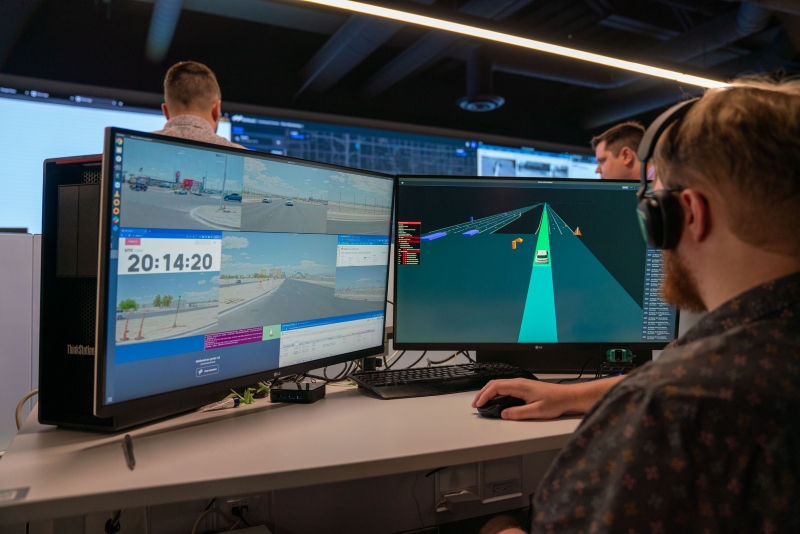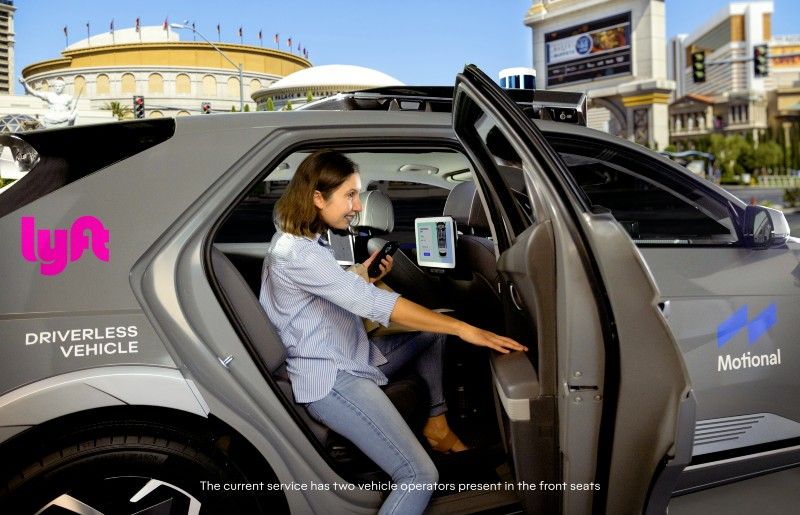By understanding and responding to the challenges of people with disabilities, we can better “build for everyone.”
At Motional, our mission is to make driverless vehicles a safe, reliable, and accessible reality, and one of our core values is to build for everyone. As we move closer to our goal to globally deploy fleets of driverless vehicles through leading ride-hail partners such as Lyft and Via and prepare to launch our next-generation robotaxi, Motional is working to make sure no one is left behind in enjoying the benefits of our groundbreaking technology.
That’s why Motional experts in user and product design, along with input from the Institute for Human Centered Design and others, recently conducted a comprehensive accessibility study to understand – and design for – challenges facing disabled riders. Individuals with a mix of physical, sensory, and cognitive disabilities from more than a dozen rural, urban, and suburban areas participated in the study.
Participants were asked to record video diaries of their vehicle trips as well as document mobility aids they carry with them, such as wheelchairs and canes, and personal items, including phones and chargers. Motional researchers watched and analyzed nearly 400 videos – vignettes of participants' car-trip routines and challenges – to determine how to make the company’s driverless vehicles more accessible to a wide range of users, regardless of disability.
Defining Disability
When most people think of disabilities, what typically comes to mind is perhaps total blindness or confinement to a wheelchair. Yet both of these are a small percentage of the overall population. While wheelchair users are the main focus of accessibility standards and codes, they only comprise 1.4% of the U.S. population, whereas the number of people with difficulty walking is 10 times those who require wheeled mobility.
Similarly, people who are completely blind are 15% of what’s considered the legally blind population, with the rest made up of various low-vision conditions that include lack of acuity or focus, loss of peripheral vision, and lack of central vision. “The low-vision population that can read Braille is actually quite low,” says Felice Ling, Motional’s UX Research Lead, who spearheaded the study.
Adults with disabilities make up more than one-quarter (26%) of the U.S. population, and an aging citizenry and longer life expectancy will result in more people with multiple disabilities. For example, the majority of people who have difficulty walking are older, and about 20% also have hearing and/or sight loss. In addition, brain-based conditions such as autism and dementia are now the second highest category for disability.
Currently, an estimated 25.5 million Americans experience a travel-limiting disability. To get around, 14% use special transportation services, 44% rely on asking others for rides, and 70% are forced to reduce their day-to-day travel. According to a 2017 National Household Travel Survey, this results in 3.6 million Americans not leaving their homes because of disabilities, limiting their access to employment and health care and lowering their income and standard of living.
An All-Inclusive Experience
Driverless vehicles have the potential to change this and enable those with disabilities to gain and maintain independent lifestyles. By better understanding the needs of individuals with travel-limiting disabilities through its recent UX research, Motional intends to create highly accessible driverless vehicles – and, ultimately, an all-inclusive experience.
Here are a few key takeaways from the study:
- People with disabilities need extra time to prepare for a trip and gather accessibility tools and supplies, which takes additional effort and mental capacity. “Once I leave, I don’t have the luxury of getting turned around,” says a study participant, who has cerebral palsy. Building reminders and customizable checklists can assist riders in establishing pre-trip routines and helps Motional learn about needs for frequent trips and auto-generate checklists when applicable
- It's important to design a ride experience in which disabled passengers don’t feel rushed or stressed before or during their ride by considering the time it takes for them to enter and exit the vehicle. “Before my accident, [a trip] that would have taken 20 minutes roundtrip now takes that much time just to get in the car," says a study participant who has back problems and limited mobility. Other factors to consider are tying pricing to total time for the trip and avoiding scenarios in which a disabled person may share a ride with an able-bodied person who is in a rush.
- Design elements should be clear and functional, and important instructions should be highlighted with bold colors, clear contrasts, and appropriate layout and sizing. Audio can be used for the visually impaired as well as others. “It’s difficult for me to process notes and signage at times, so I prefer to have things told to me verbally,” says a participant who has autism spectrum disorder, diabetes, PTSD, and depression.
- Integrating personal accessibility tools, such as Bluetooth connections for hearing aids, can help disabled riders. Making space available for passengers to store accessibility devices like wheelchairs and canes or even service animals is also imperative.
- Adding items that provide stability, support, and comfort help. “The worst part is climbing into the vehicle and getting settled,” says a participant with Ehlers-Danlos Syndrome that affects connective tissue and can lead to overly flexible joints that can dislocate. Building in support surfaces and tools (handles, footsteps, etc.) can help passengers climb in and out of vehicles, as does lowering the vehicle threshold. Simple solutions such as making seats adjustable, adding seat-back and bottom support, and reconsidering driving style and route selections that optimize for smooth rides also make a difference.
A Solution that Works for Everyone
This research helps guide how we’ll design future driverless vehicles and improve the experience for all passengers with each iteration. And by building driverless vehicles from the ground up with our partners Aptiv and Hyundai, Motional will best serve not just the disabled, but everyone, says Tristan Dwyer, Motional’s UX Design Director.
With traditional “mobility” vehicles for the disabled – and even other autonomous vehicles – accessibility is designed more as an afterthought using a “chop-shop approach,” Dwyer notes. “We focus on designing for people with disabilities not as a separate step, but as a solution that works for everyone,” he adds. “We’re really designing for ourselves – we all have disabilities.”

